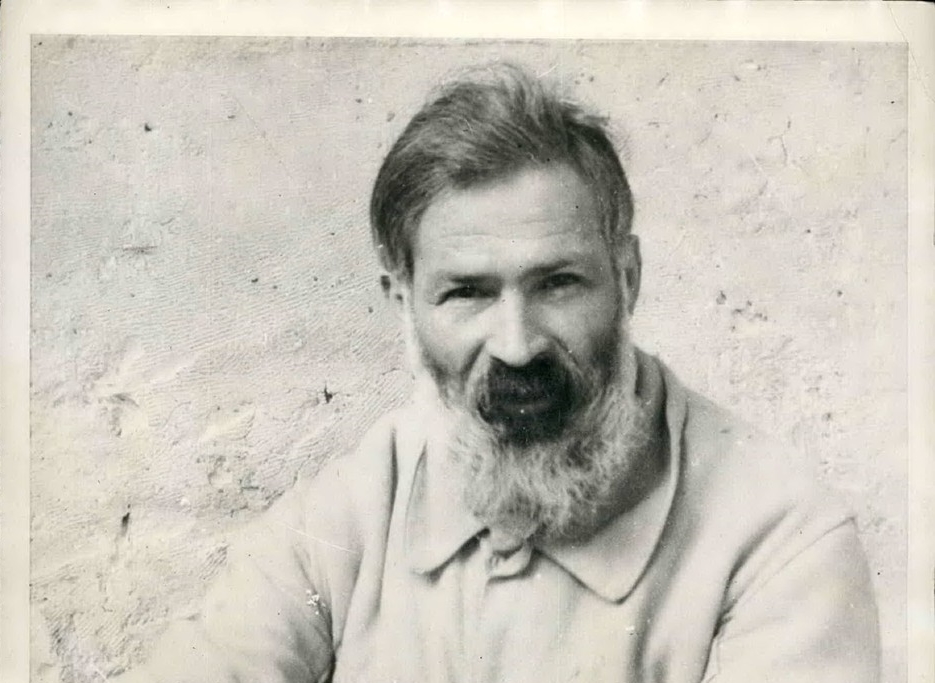
Konstantin Brancusi died on March 16, 1957 in Paris. Shortly before that, the sculptor from Gorier had confessed and received communion in his workshop, confessing to Archbishop Théophile, a priest of the Orthodox Church in Paris: “I am dying with a sad heart because I cannot return to my country.” He was buried on March 19 at the Montparnasse cemetery in the capital of France.
Researching information about the death of the sculptor from Gorzhan in the communist press, we learn that the news about the sculptor’s death was announced three days later, in the newspaper “Scânteia” dated March 19, 1957, on the last page: “Death”. Konstantin Brancusi. Paris (Agerpress). “The famous Romanian sculptor Constantin Brincusi died on Saturday in Paris at the age of 81.” [1]
On March 20, in the same newspaper, in a larger article, the Union of Plastic Artists of the Romanian Republic “announces with deep regret the death in Paris of Constantin Brancusi, one of the most important Romanian sculptors and one of the most gifted and original creators of modern contemporary art”[2].
The press release of the Union of Visual Artists was picked up by the newspaper “Free Romania” on the same day.[3] and “Red Flag”. The two articles state that in 1956, “when Bryncush turned 80 years old, the Romanian People’s Republic honored Bryncush with a retrospective exhibition of works in the country, organized by the Art Museum of the RPR.”[4].

Konstantin Brancusi (Photo edited by: Zuma Press / Profimedia)
On March 22, the newspaper “Scânteia”, taking information from “Agerpres”, informed its readers about the funeral of Konstantin Brancusi.
“At the funeral ceremony, which took place in the Romanian Orthodox Church in Paris, in the presence of a large number of admirers, among whom were many representatives of the artistic life of France, the delegation of the Representation of the Romanian People’s Republic in Paris, headed by Chargé d’affaires Gheorghe Pascu, laid a wreath from in the name of the representative office. A wreath was also laid by the Association of Visual Artists of the Romanian People’s Republic.”[5]
From the pages of the same newspaper, we learn that after the ceremony, the vice-president of the board of directors of the Association of National Museums of France, Georges Salles, and the director of the National Museum of Modern Art in Paris, the writer Jean Cassou. , made speeches in which they “emphasized the importance of Brincusi’s work in the evolution of modern art”[6].
On July 6, 1957, “Free Romania” announced that during the Triennale in Milan, the Romanian People’s Republic paid tribute to the sculptor Constantin Brincuza by reserving a place on the exhibition stand for three of the sculptor’s works: “Kiss”, “Portrait of Miss Pogani”, as well as some photos of his works in the country”[7]. (historian Andriy Popete-Petrasku)
________
1. “Scânteia”, Bucharest, year XXVI, no. 3858 dated March 19, 1957, part 4.
2. Idem, no. 3859 dated March 20, 1957, part 4.
3. “Free Romania”, year XV, issue 3871 dated March 20, 1957, part 4.
4. “Red Flag”, year IV, issue 922 of March 20, 1957, part 4.
5. “Scânteia”, Bucharest, year XXVI, no. 3861 dated March 22, 1957, part 4.
6. Ibid.
7. “Free Romania”, year XV, issue 3963 of July 6, 1957, part 1.
Source: Hot News
Ashley Bailey is a talented author and journalist known for her writing on trending topics. Currently working at 247 news reel, she brings readers fresh perspectives on current issues. With her well-researched and thought-provoking articles, she captures the zeitgeist and stays ahead of the latest trends. Ashley’s writing is a must-read for anyone interested in staying up-to-date with the latest developments.